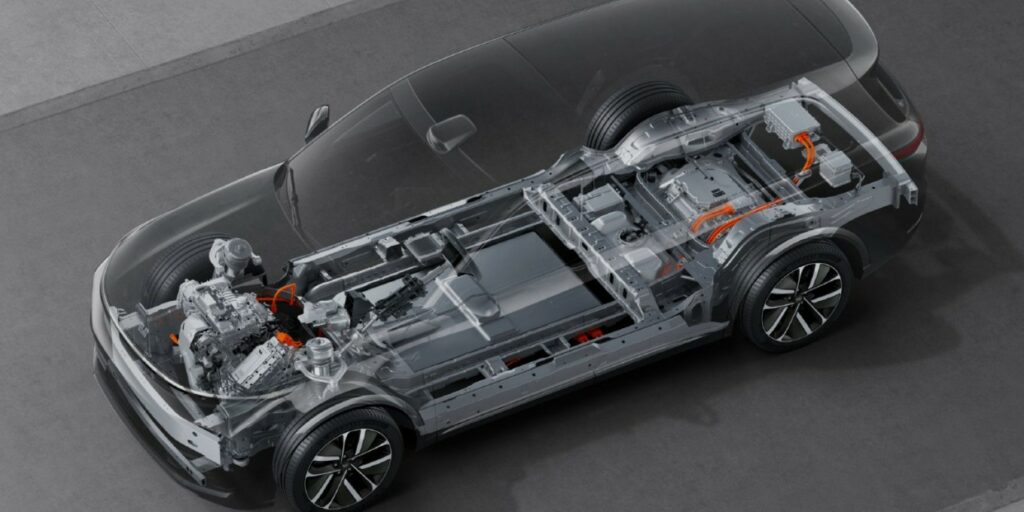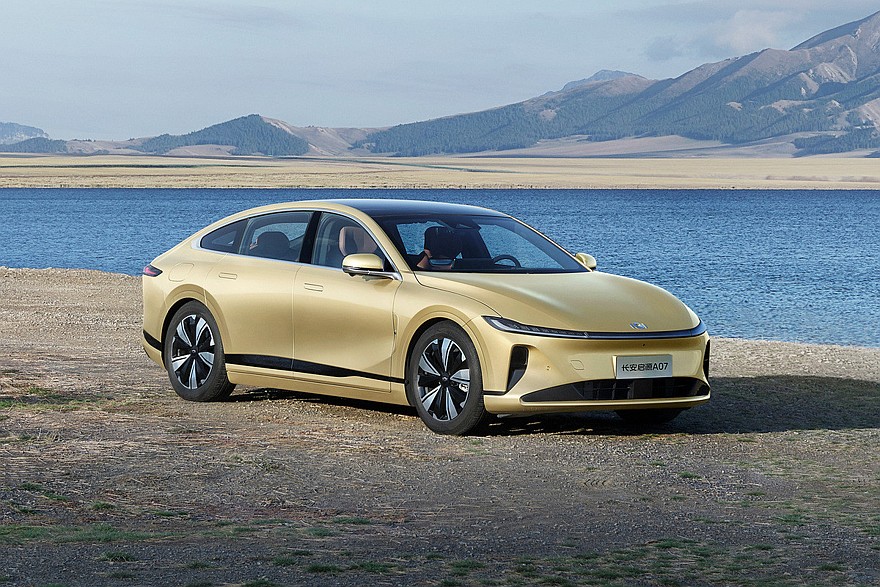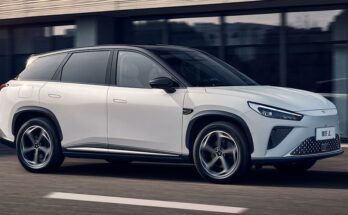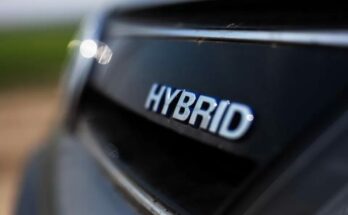Electric vehicles (EVs) are the core area where the world appears to be moving as automotive technology advances. However, there are still certain other types of vehicles that are manufactured in key markets that make use of internal combustion engines in a particular fashion.
While EVs completely eliminate an engine and only require a battery & a motor to function, vehicles such as hybrids (HEVs), plug-in hybrids (PHEVs), and range extenders (EREVs) combine a conventional engine with electrified technology. Let us understand the difference between these three types of vehicles.
Hybrids (HEVs)
HEVs are powered by an internal combustion engine and one or more electric motors, which use energy stored in the batteries. Together with an internal combustion engine (ICE), electric motor, and battery, HEVs not only boast fuel efficiency but keep emissions low. The ICE sends power to charge the battery pack, while energy from braking is captured and stored as energy (regenerative braking). In this way, HEVs are in a way ‘self-charging’.
Related: Prioritizing Small Hybrid Cars in Pakistan
However, this technology has now been around for more than 25 years and has become kind of obsolete. It has in fact matured into PHEVs and EREVs.
Plug-in Hybrids (PHEVs)
Plug-in hybrid electric vehicles (PHEVs) use the same technology as full hybrids, but with a higher battery capacity, they can go for relatively longer distances in pure electric mode. Its electric motor uses batteries that are recharged by plugging into an electric power source (a wall socket or EV charger). Only when the battery is exhausted will the combustion engine kick in and power the vehicle in the manner of a traditional petrol/diesel vehicle. Plug-in Hybrids are most efficient when charged on a regular basis and cover a large percentage of their driving in electric-only mode.
Extended Range Electric Vehicles (EREVs)
EREVs or simply range extenders essentially bridge the gap between plug-in hybrids and EVs. The vehicles run on electricity only, but unlike pure electric vehicles, they also have a generator on board to recharge the battery when it is depleted. This eliminates range anxiety as the vehicle will run as long as it is refueled with petrol. The vehicle is never directly powered by the petrol engine like other hybrids and is always driven by the electric motor. This provides far better fuel consumption and emission benefits over a PHEV.
Benefits of EREVs
EREV is a slightly different take on PHEVs – both have electric motors and both are powered by batteries but that’s where the similarities end. The EREV uses a combustion engine purely as a generator and as such there is no connection between the engine and the drivetrain. Usually a gasoline engine, the generator has the sole purpose of charging up batteries when they run low.

Since the car comes with a charger built-in, there is no need for a large battery and usually, these cars come with a battery pack no larger than 45 kWh. It is still big enough to offer a decent electric-only driving range compared to PHEVs. Some of the EREVs can travel on battery power for as much as 200 km. When the batteries run low, you’ll have two options – let the generator kick in or stop at a DC charger for a quick top-up.
Related: Changan’s Qiyuan A07 EV with 1,200km Range, Goes on Sale in China
It means the EREV essentially works as an EV with the ability to recharge itself if there are no DC or AC chargers around. 200 km range is often enough for many drivers and having the generator onboard means peace of mind for longer trips or unexpected situations.

EREVs can be considered the next generation of PHEVs. Disconnecting the ICE from the drivetrain means no need for complicated gearboxes and the engine itself can be run at constant revs, at its most efficient speed thus even further saving fuel. These cars were specifically designed to offer electric driving without the battery charging limitations. The arguably biggest stumbling block for the wide adaptation of electric cars is simply the lack of charging infrastructure. EREVs remove that obstacle and offer a “stop-gap” so to speak – electric drive for as much as 1,200 km of driving range.
Related: How Did China Come to Dominate the World of Electric Cars?
Due to their smaller battery, EREVs are also less expensive than comparable EVs. Additionally, automakers can fit smaller batteries in considerably bigger cars. In EVs, the smaller battery is available with smaller vehicles, which are less practical due to their size, driving range, and utility limitations. However, in the case of EREVs, a small battery can be installed in larger sedans or crossovers, which offer the advantages of space and utility as well as a comprehensive drive range of about 1200km, which is, to put it simply, economically viable.

In a nutshell, HEVs and PHEVs have a conventional engine (assisted by battery & motor) that drives the wheels, so you need to have a transmission. In EVs and EREVs, the electric motor drives the wheels which omits the need to have any gearbox.
Should EREVs be offered in Pakistan?
Yes, why not? Pakistan is yet to get rid of its power problems and developing a proper EV infrastructure looks like a distant dream. Plus, the EV policy became toothless due to the 50kwh battery limitation that was put in place to protect the interests of local assemblers. However, the EREVs can easily qualify for all the subsidies of sub-50kwh conditions and can provide a driving range that way more than any conventional automobile, while eliminating the need to build an EV infrastructure network.
Related: For Which “E” The Hybrids in Pakistan Are For?
Chinese automakers operating in our country are in the best position to introduce EREVs in Pakistan. Because as obvious, that the Japanese are far behind in the EV and EREV race at the moment. While we continue to hold out hope that a small number of ultra-expensive hybrid vehicles aimed at the elites will ease Pakistan’s burden of fuel imports, it is actually the EREVs, that offer up to 1200 km of driving range with their meager sub-50kwh batteries and more affordable price tags, that have all the potential to do wonders for Pakistan in terms of fuel savings and gain environmental advantages.

A computer animation professional with over 23 years of industry experience having served in leading organizations, TV channels & production facilities in Pakistan. An avid car enthusiast and petrolhead with an affection to deliver quality content to help shape opinions. Formerly written for PakWheels as well as major publications including Dawn. Founder of CarSpiritPK.com




